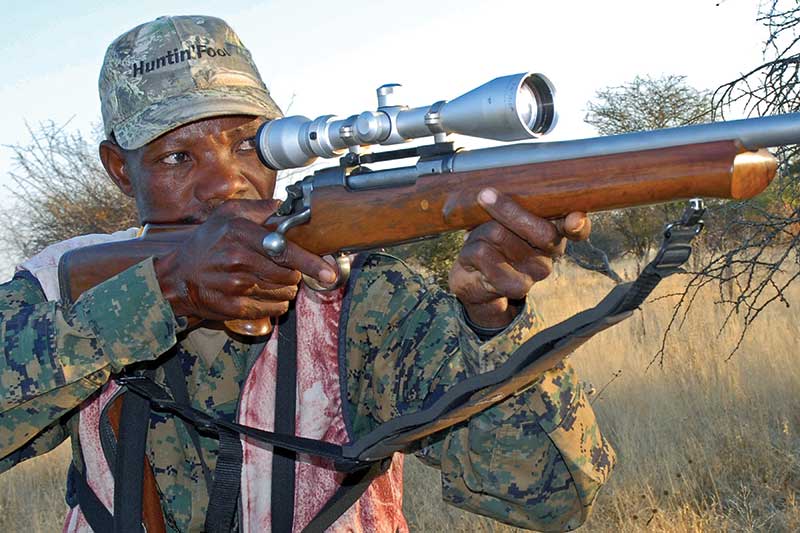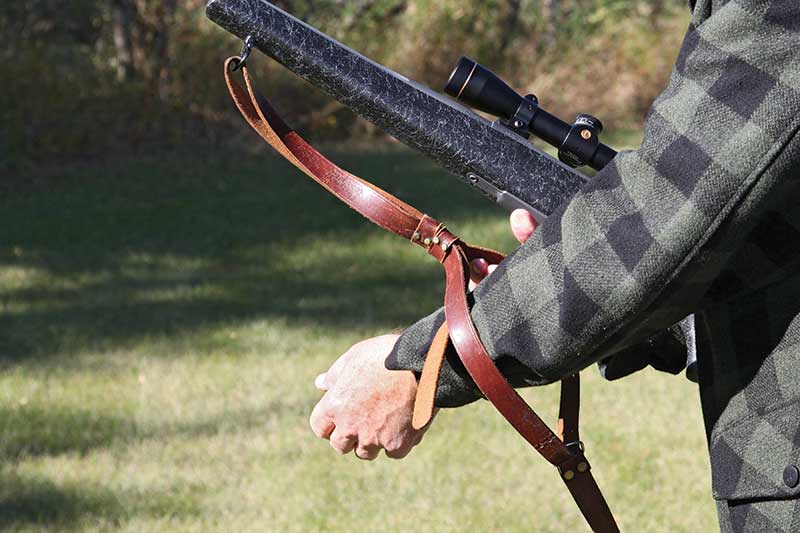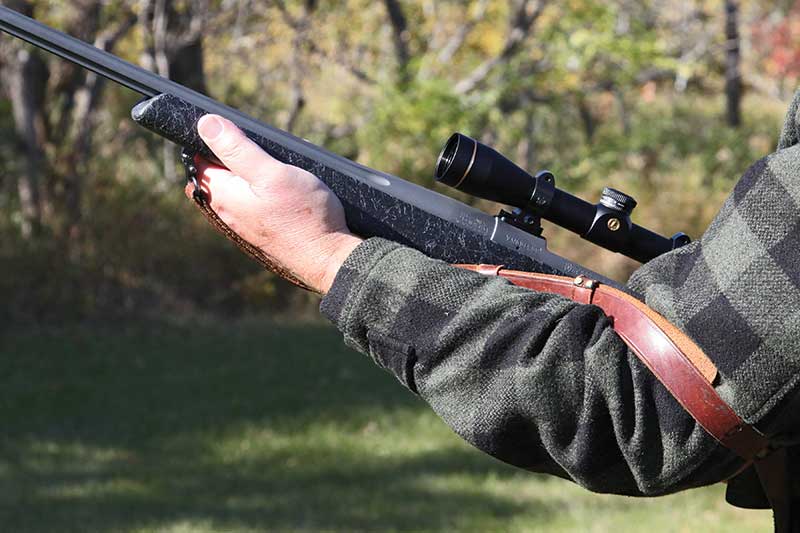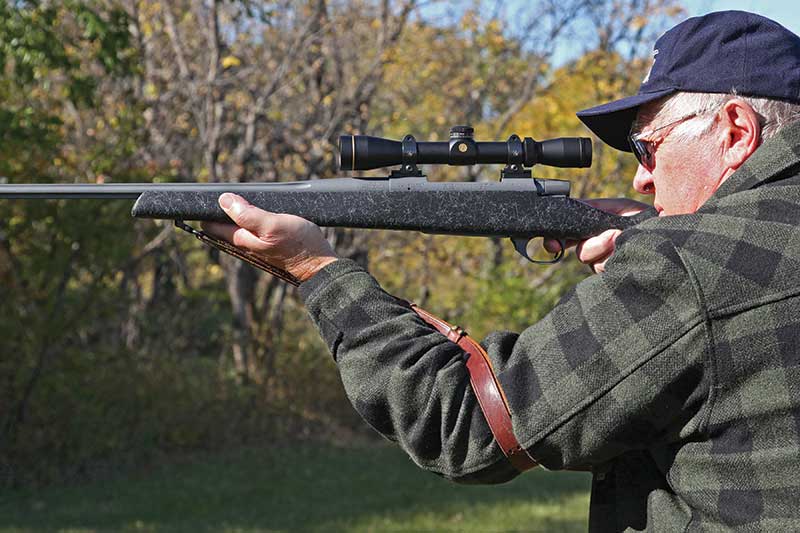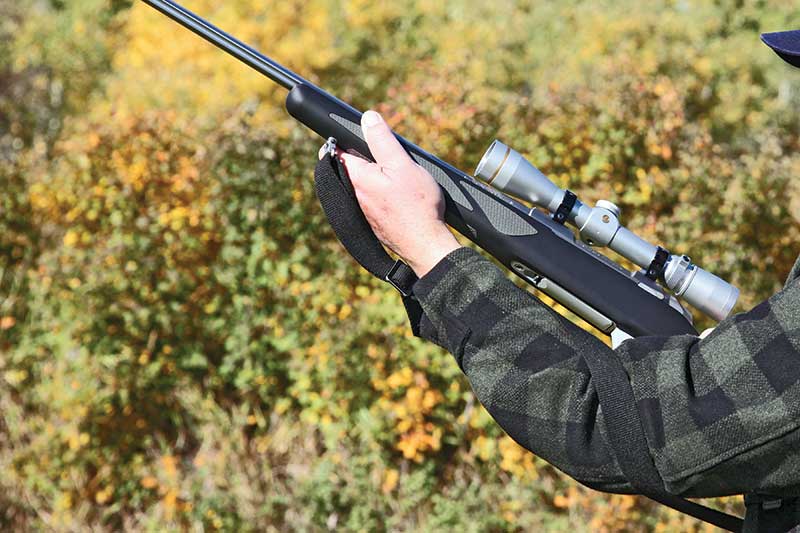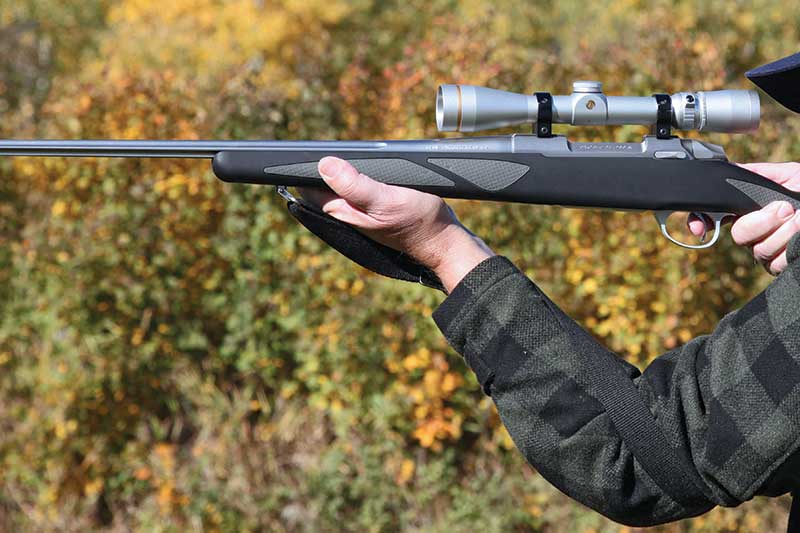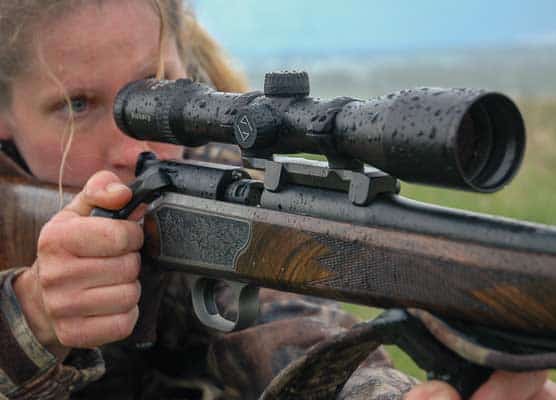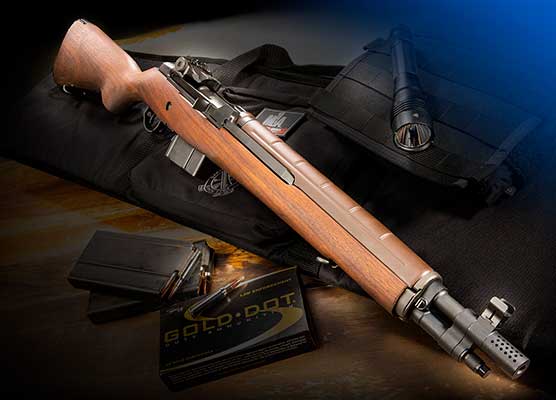Slingin’
The Rifle Sling And How To Use One Afield
One of the most useful accessories for a hunting rifle is a sling, both to carry the rifle and as a support to enhance accurate shooting in the field. Judging from what I see for sale in catalogs and gun shops, most shooters just want a carrying strap. Competition rifle shooters know all about using a shooting sling, but among hunters it seems to have become a lost art.
Generally you can find some sort of support in the field—a tree, fencepost, rock, shooting sticks, bipod, backpack or even a binocular. The beauty of a shooting sling is it’s always there.
The sequences show how I use both a shooting sling and the so-called “hasty sling” with a plain, web carrying strap. A few observations:
Competition rifle shooters are meticulous about sling position, sling tension and placement of hand against the front swivel. Consistency is the essence of marksmanship. My perspective is as a hunter and I place a higher value on getting looped up and delivering the shot promptly rather than minute gradations of accuracy.
The sling needs to be tight to be effective. It should require some effort to lift the buttstock to the shoulder.
The sling provides a tight connection between your support arm and rifle, and only steadies the rifle if the support arm is held steadily. A sling provides little benefit when shooting offhand (the photos are shown standing only to make the job easier for the photographer).
A shooting sling works best from the sitting or prone position, or with the support elbow braced against some solid support.
A shooting sling works best from the sitting or prone position, or with the support elbow braced against some solid support.
Sling length for the loop is different for the sitting and prone positions. Some shooters mark or number the appropriate holes so the claw hook can be quickly placed.
A new leather sling will stretch a bit, so after some use it may be necessary to relocate the claw hooks. If the leather is any good at all, the stretching will stop fairly quickly.
Keep the sling clean and dry and apply a light coating of leather preservative oil once a year or so and the sling will last many years.
The “hasty sling” is fast to use and needs only a simple carrying strap. Some knowledgeable shooters feel it provides little benefit. Personally I find from a sitting position I’m a bit steadier with a hasty sling, enough to make the effort worthwhile. The best advice I can give is to try it and see if it works for you.
Back in 1907, the US military adopted a sling to go with its new Springfield rifles. The sling had claw hooks so it could be quickly tightened when the rifle was being stored, or lengthened when being used to carry the rifle.
The forward part of the sling could also be used as a shooting support. I can’t find evidence that any other major military force used a sling as anything other than a carry strap. It seems to be a uniquely American innovation. So effective is the design it is still being used by competitive shooters over a century later.
A true M1907 design is 1-1/4-inches wide, made of thick, heavy leather, very strong and with reasonable care it will last practically forever. Certainly one can be used on a hunting rifle provided you don’t mind the weight, which with swivels can run to 10 to 11 ounces.
About 30 years ago I bought a used rifle. Along with it came a sling of the 1907 design but made of lighter weight leather and only 1-inch wide. With swivels it weighs 6 ounces. Serious competitors would scoff at it, but on a hunting rifle I found it about ideal.
Over the years it’s been used on many rifles and on many a hunt. I remember looping up to shoot a big mule deer, and a long shot on a pronghorn. Eventually the leather cracked across two of the claw hook holes. I’m not sentimental about a piece of leather so I tossed it in the trash.
Over the years it’s been used on many rifles and on many a hunt. I remember looping up to shoot a big mule deer, and a long shot on a pronghorn. Eventually the leather cracked across two of the claw hook holes. I’m not sentimental about a piece of leather so I tossed it in the trash.
Oddly enough the next day it was back hanging on its usual peg. If it wants to stay so badly I guess I’ll just have to keep it and let the next generation throw it out. I had a heck of time finding a replacement. I finally found a similar sling at Uncle Mike’s. It isn’t in the current catalog but I see Brownells still has some in stock. I found two other companies offering this style in a light 1-inch width sling: Triple K and Hunter Co.
A good all-around rifleman should know how to adjust and use a shooting sling; it’s a useful tool and technique. Admittedly, a traditional shooting sling has some drawbacks. Even with practice it takes time to get looped up, and the process involves a certain amount of arm movement, which might alert the game. The claw hooks don’t affect a synthetic stock but could scratch up a fine piece of walnut.
There are some other useful shooting sling designs such as the Whelen style, the Brownells Latigo, the Pronghorn sling and two designs by Eric Ching, which address these issues. We’ll look at these another time.

